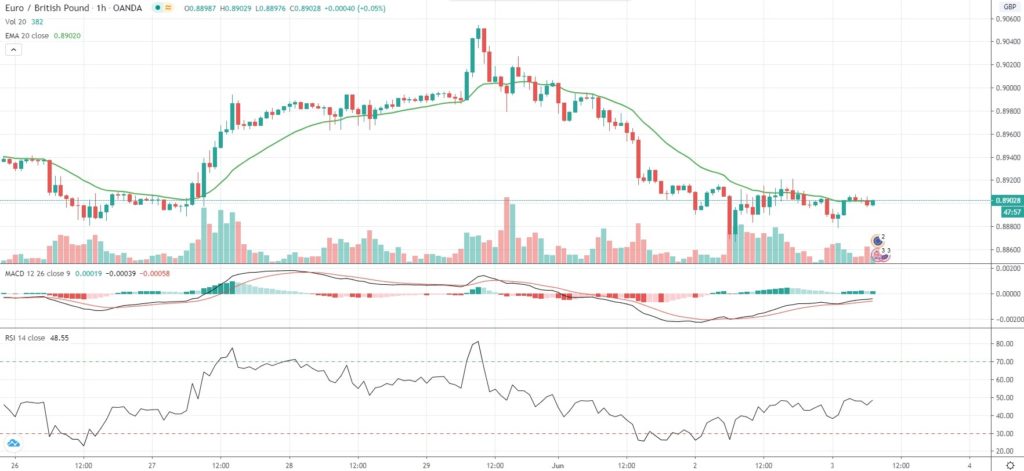Having retreated to lows unseen since May 15th on Tuesday, EUR/GBP steadied in early European trade on Wednesday ahead of key services and employment data coming out from both the EU and the UK.
The single currency gained ground on expectations that the European Central Bank will expand the size of its Pandemic Emergency Purchase Programme by about EUR 500 billion at its policy meeting tomorrow in support of the weakest economies within the Euro region. The bank’s temporary bond-purchasing programme has an overall envelope of EUR 750 billion.
Meanwhile, the Pound received support yesterday on the back of indications that Britain may be open to a compromise on sticking points in a new round of negotiations over Brexit.
As of 7:11 GMT on Wednesday EUR/GBP was inching up 0.04% to trade at 0.8902, after touching an intraday low of 0.8879 in early Asian trade, or a level not far from Tuesday’s 2 1/2-week low.
On today’s macroeconomic front, French final Services Purchasing Managers’ Index probably confirmed the preliminary estimate last month, coming in at 29.4, according to market consensus. The preliminary report showed that the sub-indexes of production, new export orders and employment had decreased at a slower rate in May, since some businesses began reopening. The final data by IHS Markit will be released at 7:50 GMT.
The final Services PMI for Germany probably also confirmed the preliminary estimate in May, coming in at 31.4. The sub-indexes of new orders and employment dropped at a slower rate in May, after coronavirus-related restrictive measures were eased. Backlogs of work, however, decreased sharply. The final data is due out at 7:55 GMT.
A separate report by the Federal Statistical Office, also at 7:55 GMT, may show that Germany’s rate of unemployment rose to 6.2% in May from 5.8% in April.
At 8:00 GMT IHS Markit will release the final data on services sector activity in the Euro area for May. The final PMI probably confirmed the preliminary estimate, as it is expected to come in at a reading of 28.7 in May. The index pointed to the third-steepest contraction in Eurozone’s services sector since comparable series commenced in June 1997, as lockdown restrictions continued to weigh on hotels, restaurants, travel and tourism. The job shedding rate eased, since lower demand caused companies to reduce capacity, while new orders decreased at a slower rate.
At 8:30 GMT IHS Markit/CIPS will release the final data on UK services sector activity for May. The respective Purchasing Managers’ Index probably came in at a final 28.0, according to market expectations, up from a preliminary estimate of 27.8. It has been the second-sharpest contraction in UK services sector activity since the survey was initiated in July 1996.
Last but not least, the seasonally-adjusted unemployment rate in the Euro area probably rose to 8.2% in April, according to expectations, from 7.4% in March. The number of people out of work surged by 197,000 to 12.156 million in March, because of the coronavirus pandemic-related confinement measures. The official report by Eurostat is due out at 9:00 GMT.
Bond Yield Spread
The spread between 2-year UK and 2-year German bond yields, which reflects the flow of funds in a short term, equaled 62.2 basis points (0.622%) as of 6:15 GMT on Wednesday. It has been the lowest spread since May 29th (60.7 basis points).
Daily Pivot Levels (traditional method of calculation)
Central Pivot – 0.8896
R1 – 0.8924
R2 – 0.8950
R3 – 0.8979
R4 – 0.9008
S1 – 0.8870
S2 – 0.8841
S3 – 0.8815
S4 – 0.8790






